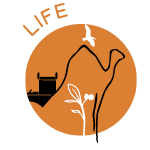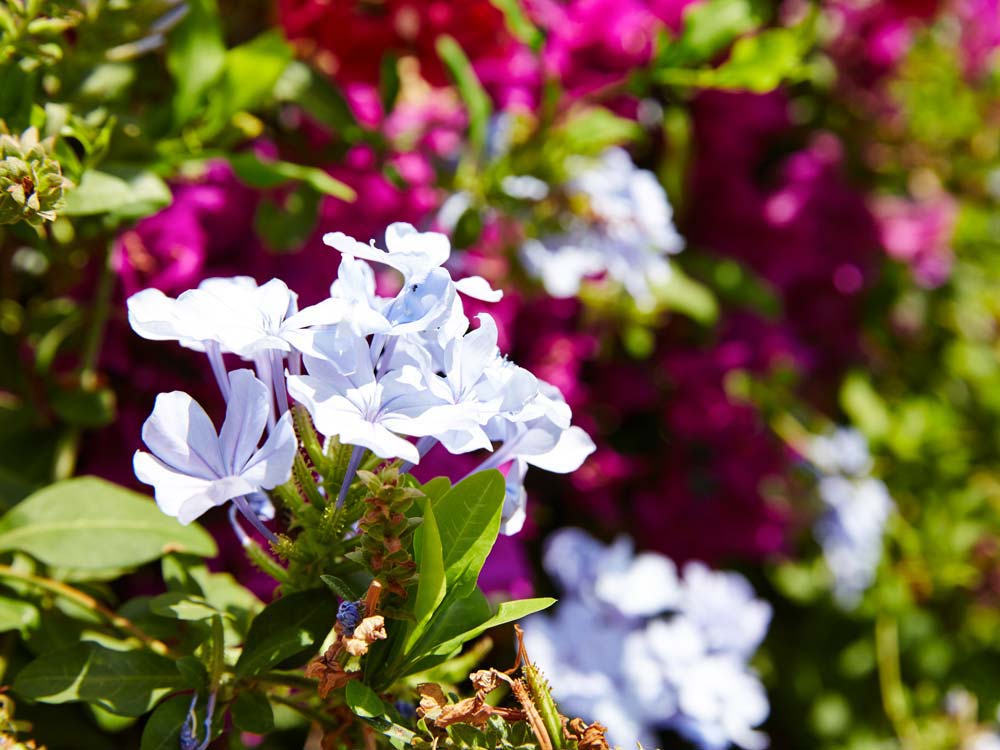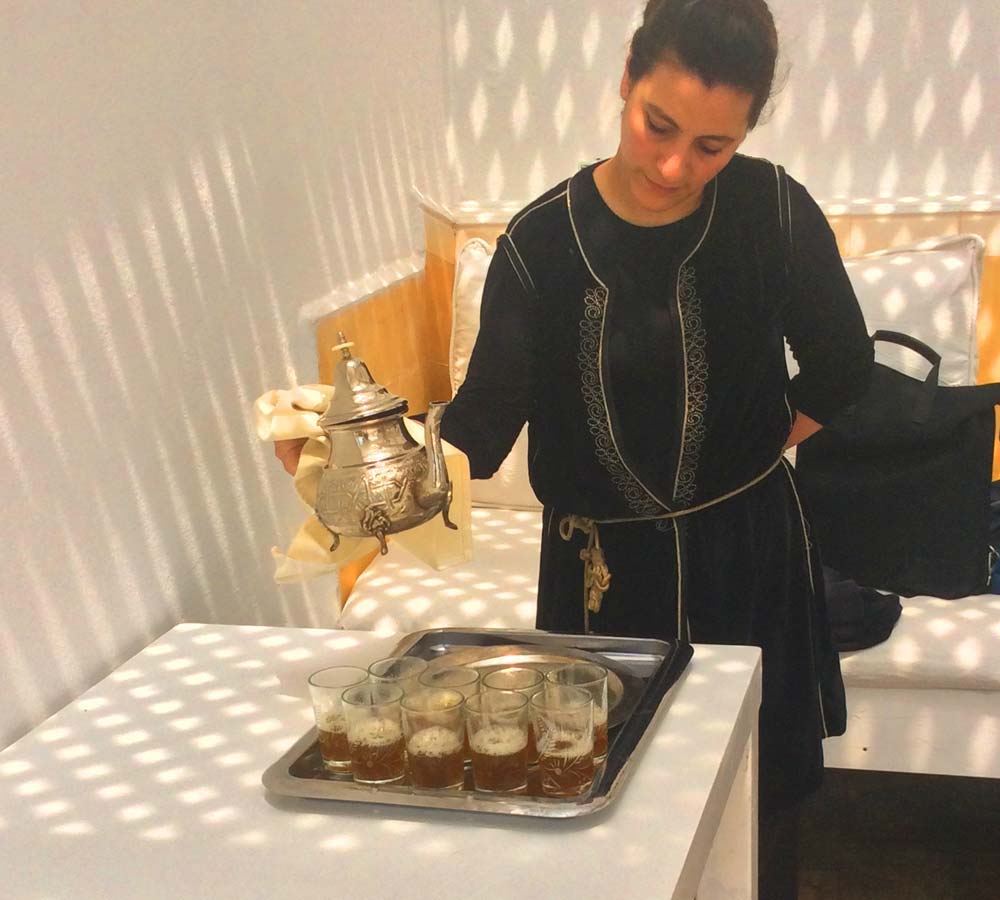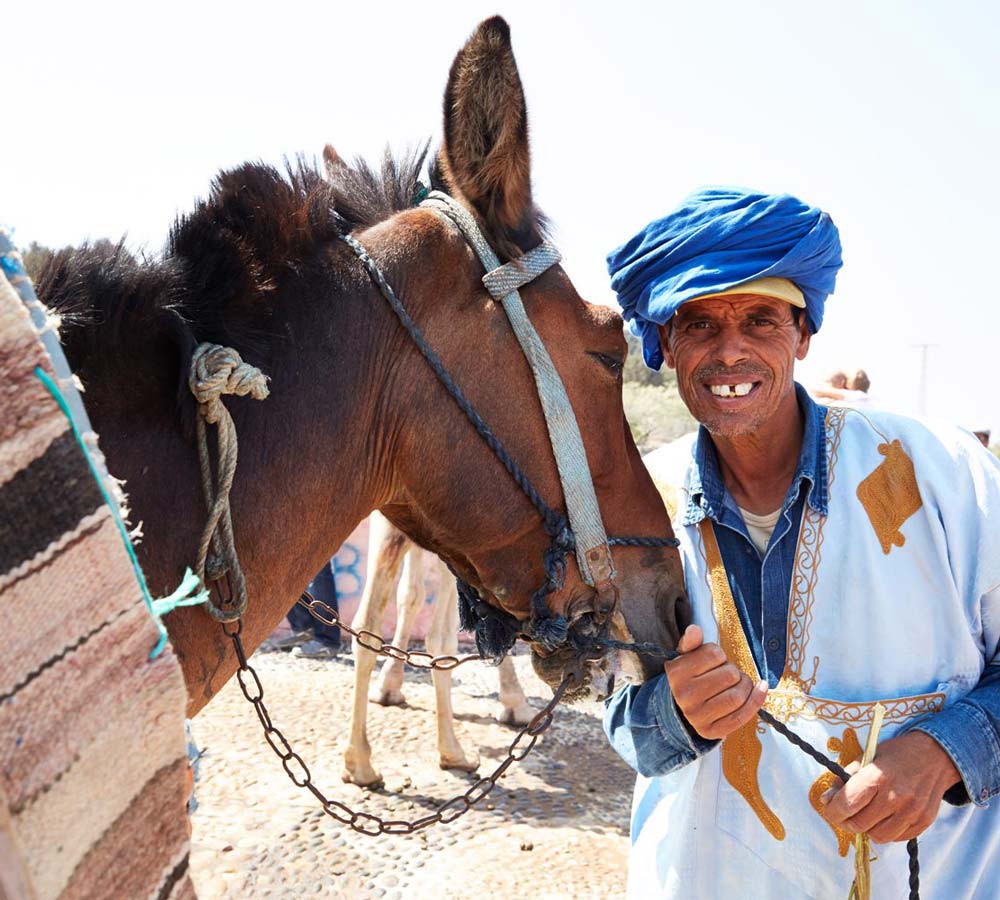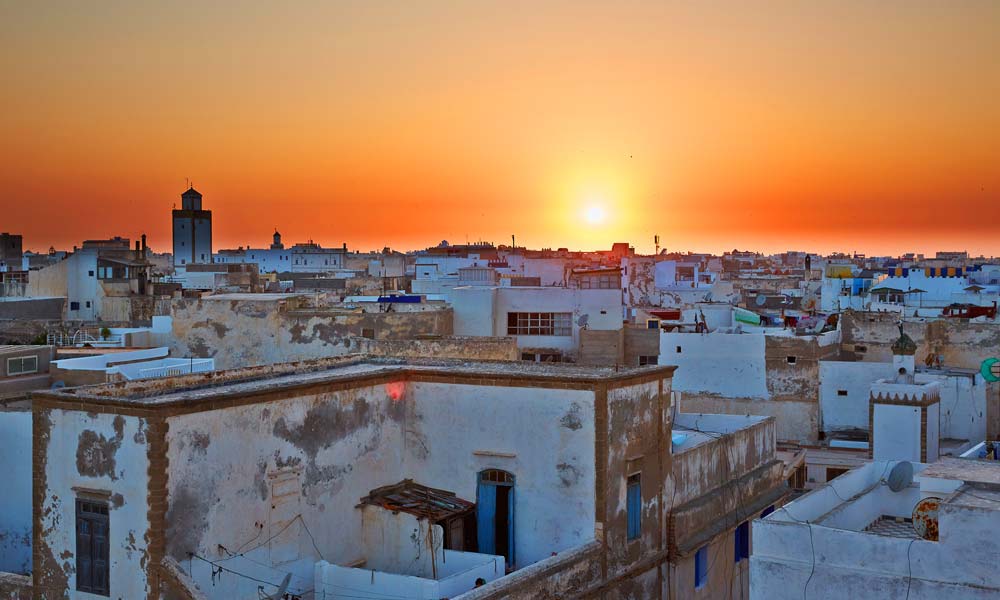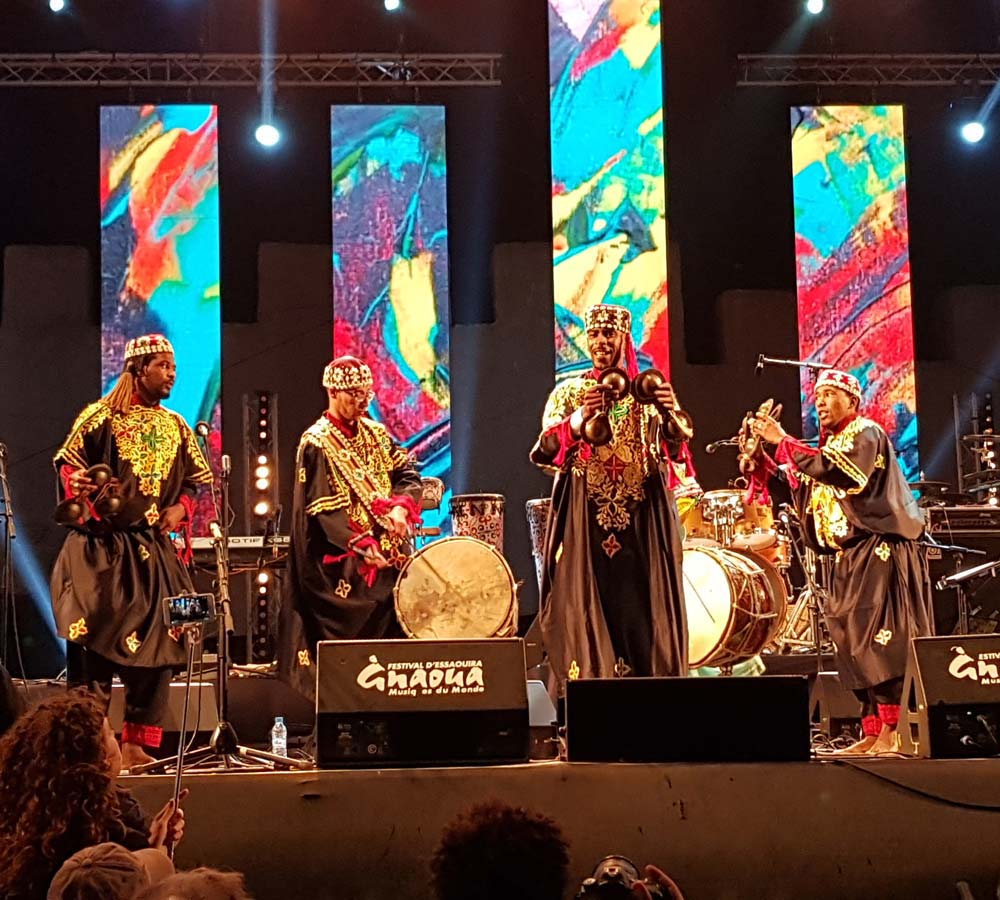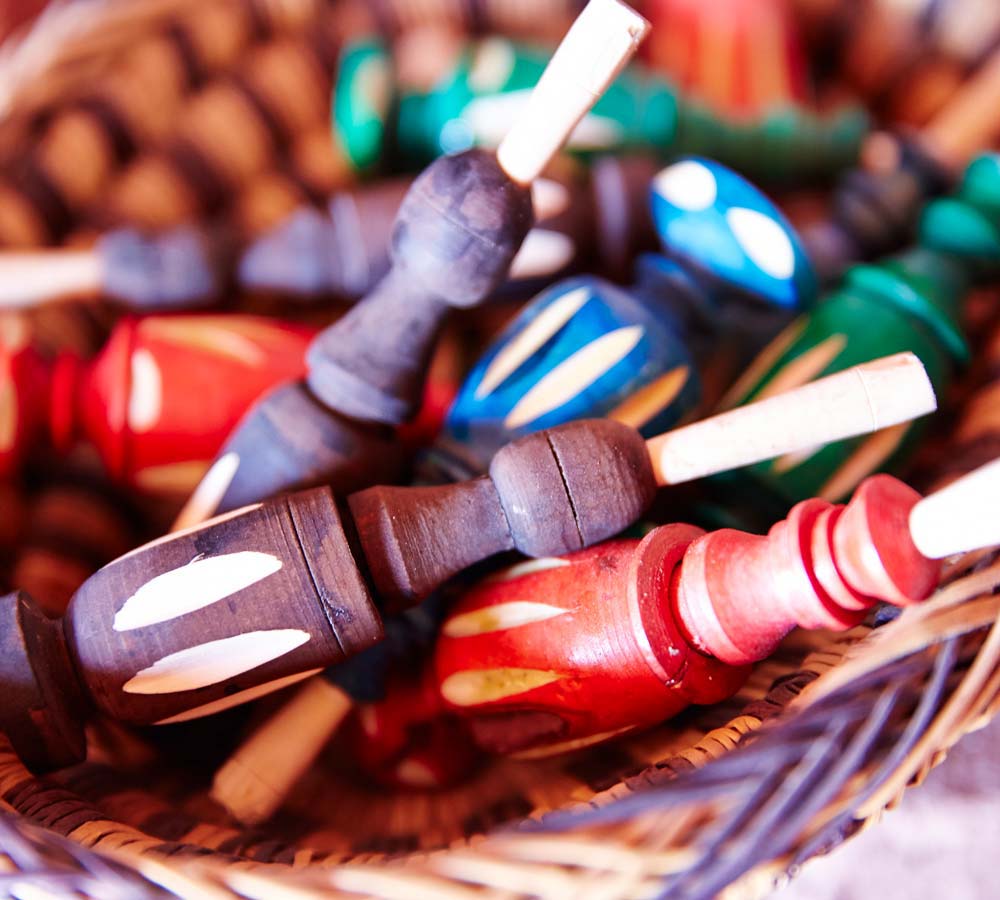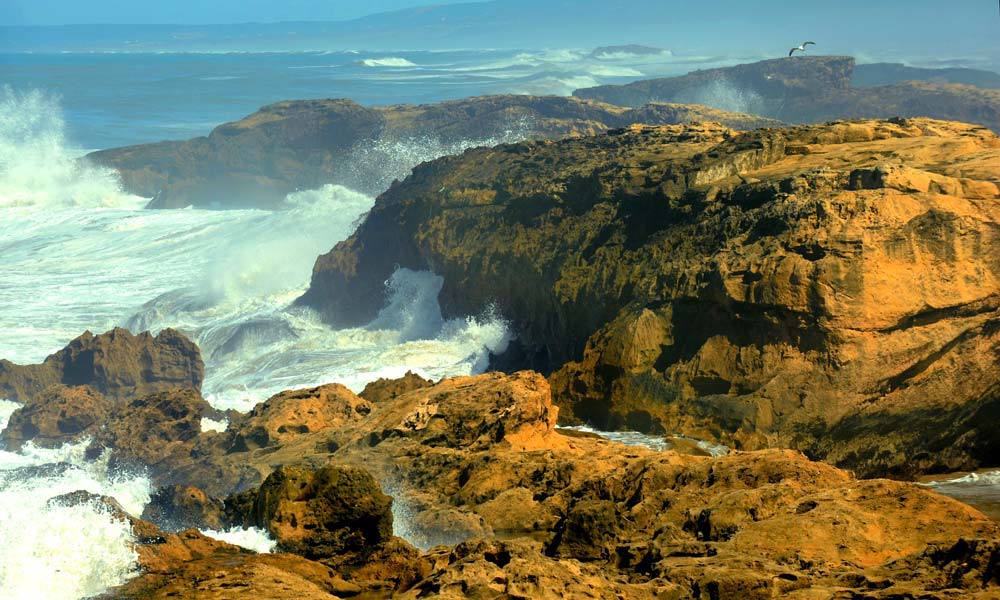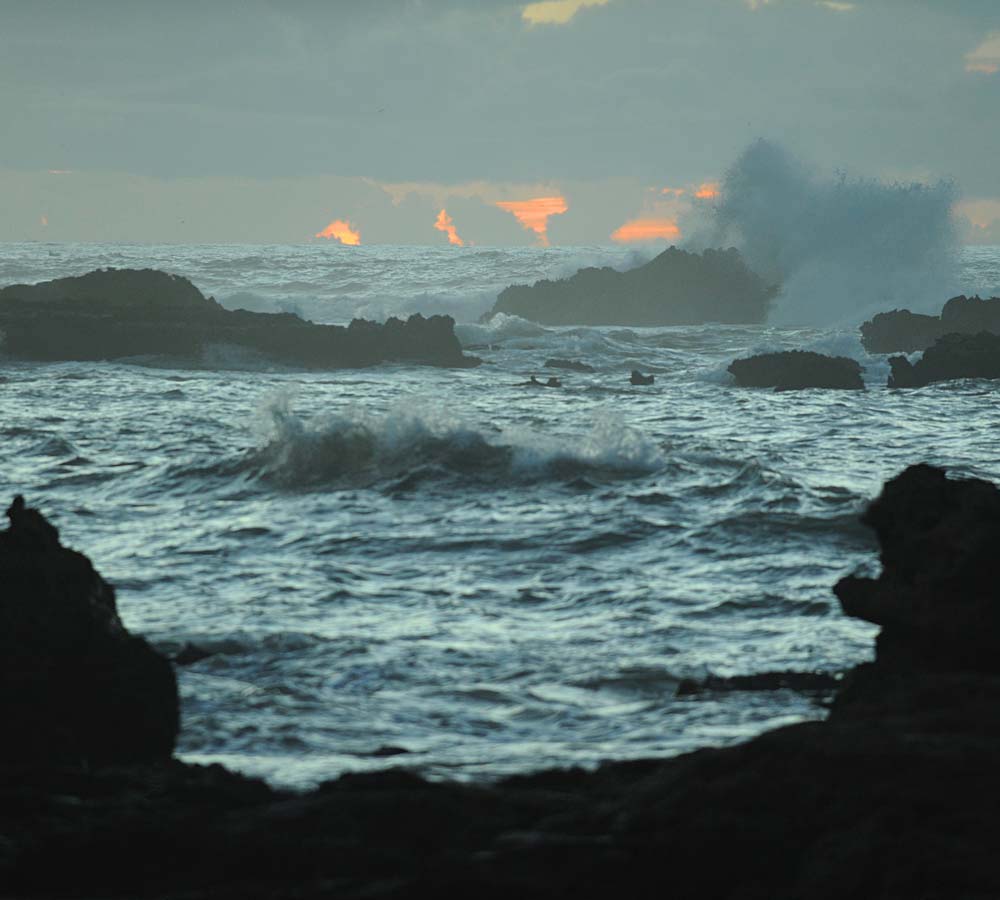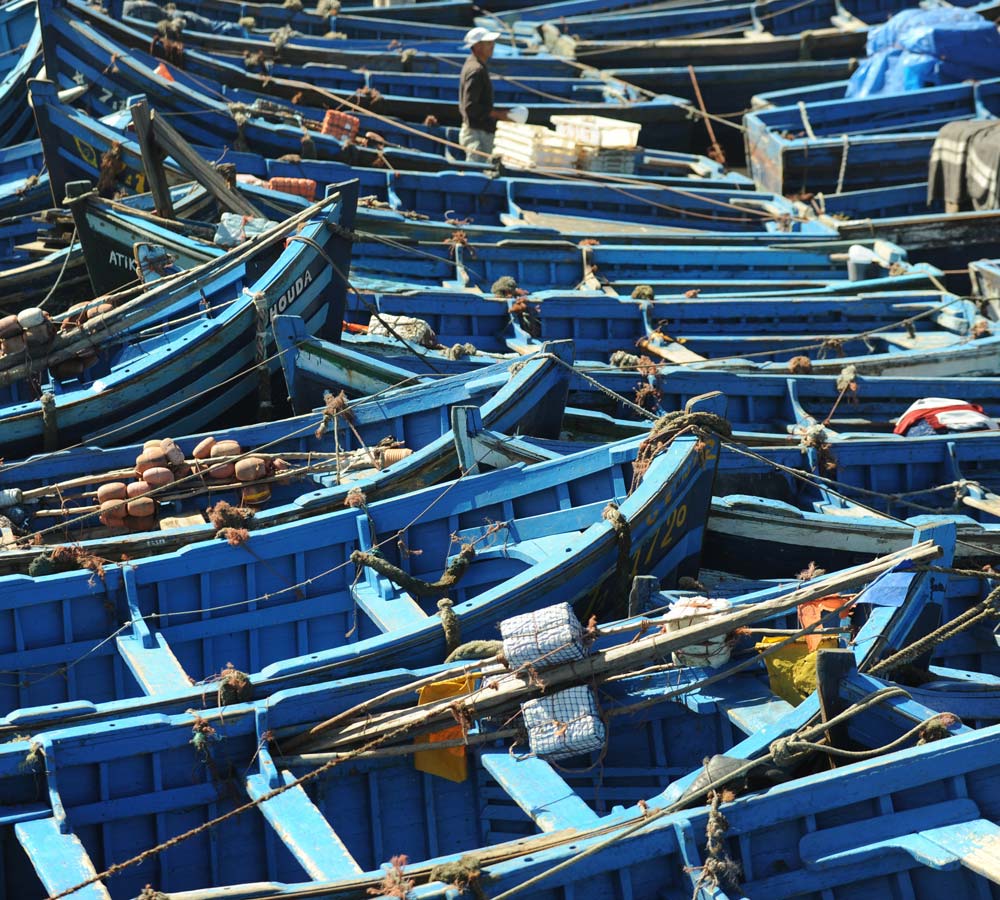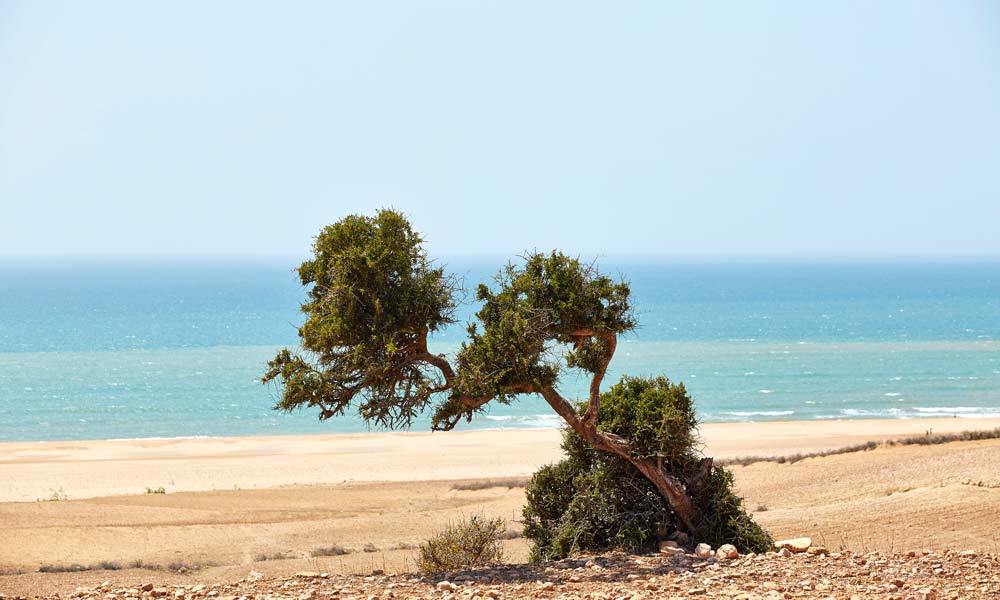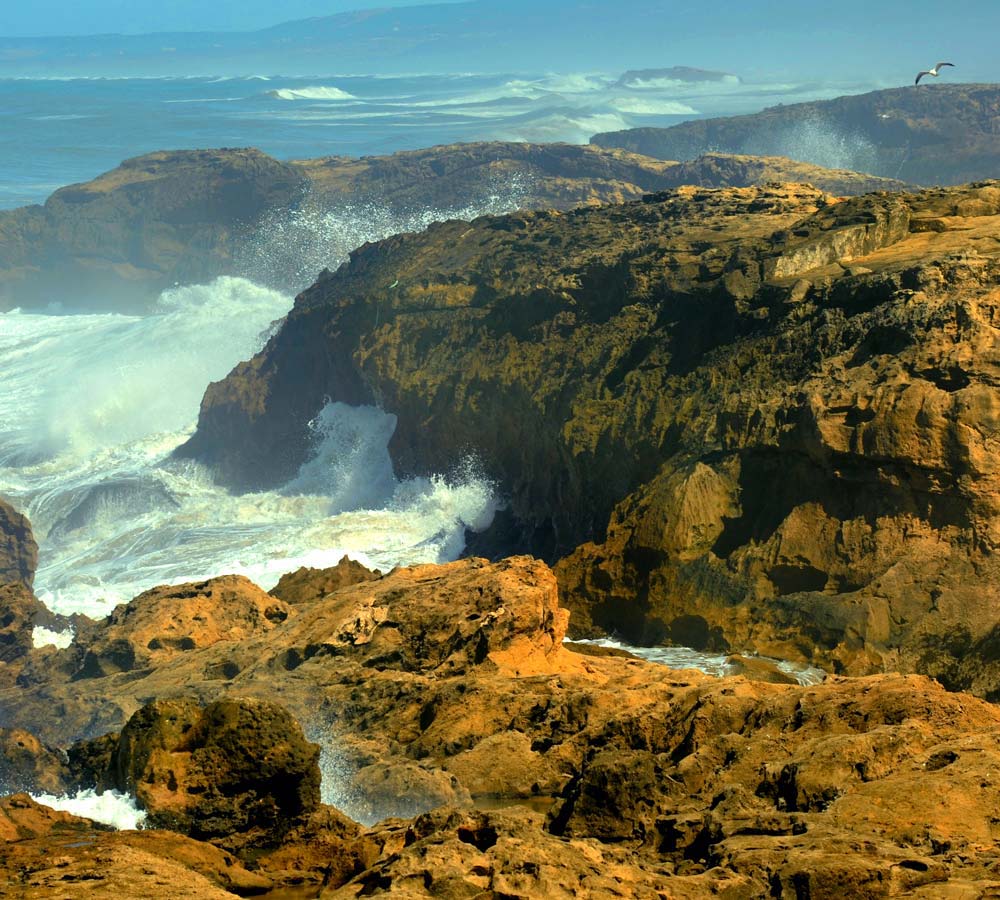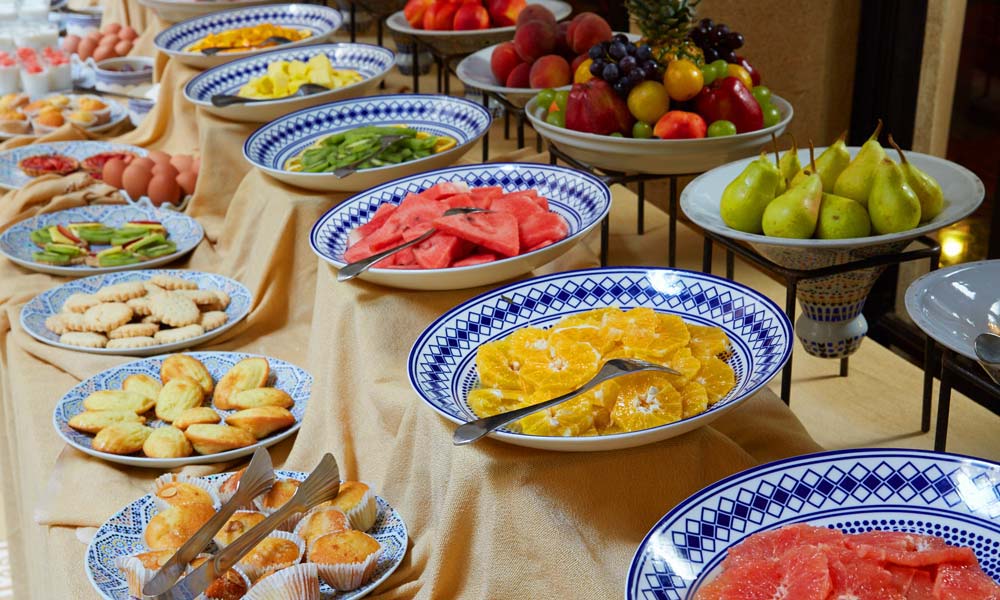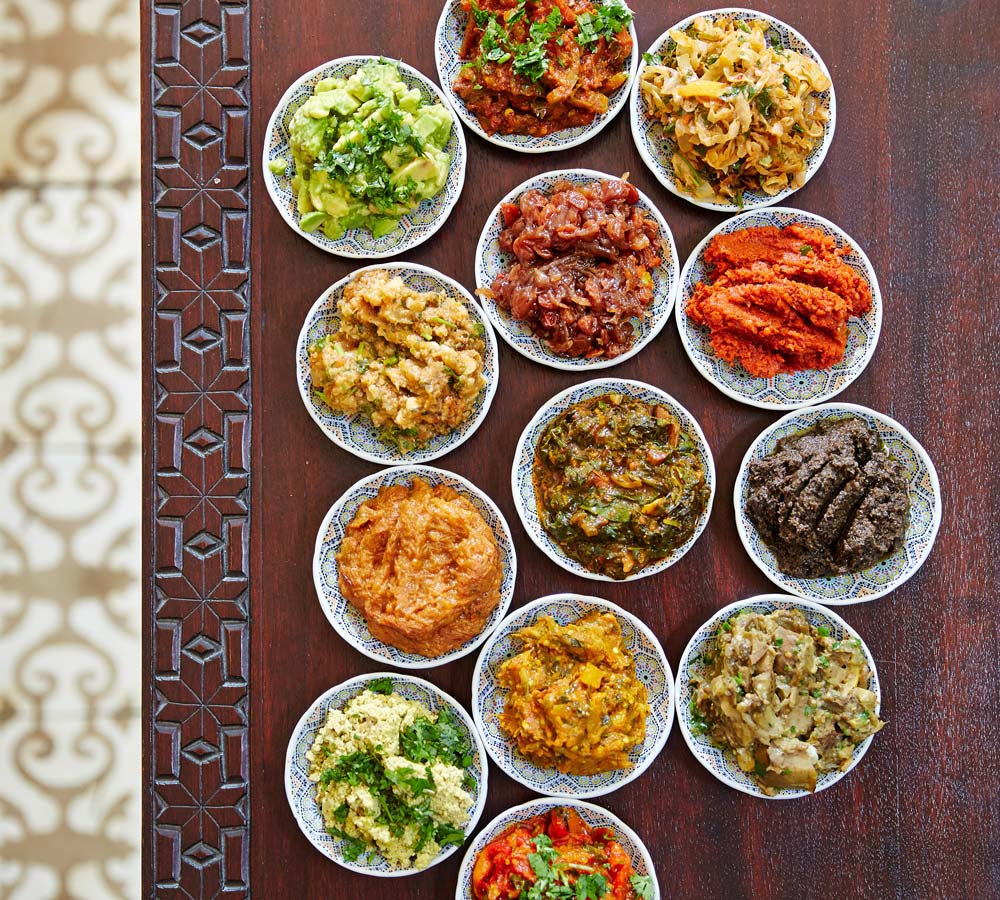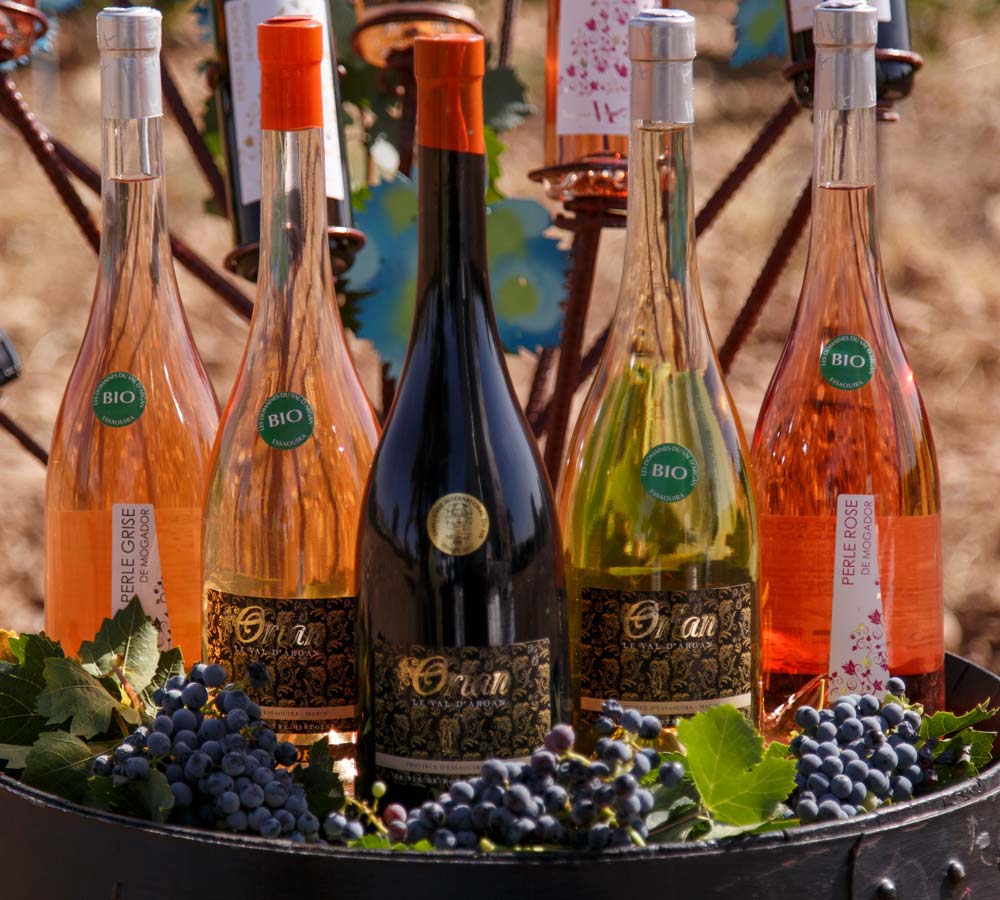


Moroccan holidays –
magical and majestic
The highlights: people, colour, nature, culture, beaches
Is Morocco the world’s most hospitable country?
It’s definitely in the Top 3!
The World Economic Forum has confirmed what tourists have long known to be true: Morocco is the third most hospitable country in the world! The ‘gateway to Africa’ beat 140 other tourist destinations with its openness, community spirit and much, much more …
A magical Moroccan holiday?
It’s all thanks to the country’s people!
Moroccans are a friendly bunch; warm and welcoming to visitors from other countries. Don’t be surprised if you find yourself invited for a cup of tea and a sweet pastry, or a bowl of fresh couscous with steaming vegetables and aromatic spices. Moroccans are deeply rooted in their traditions but very open to, and interested in, other cultures. It’s no wonder really – they have a long history of peaceful coexistence, with Muslims, Christians and Jews living side by side, and a strong belief in community and sharing what you have, even when you have very little.
Get to know the warm and welcoming Moroccan people. Enter the gateway to Africa and bring all your senses: let yourself be enchanted …
The land of a thousand colours
Glorious Morocco
While the vibrant souks of Agadir, Essaouira, Marrakesh, Meknes and the royal city of Fez (which boasts the world’s largest medieval Islamic old town), will offer you plenty of red gold, saffron, you will also marvel at fabrics in every shade and hue, and admire the pigments – from light brown to purple – used by the leather makers and tanneries. Berber carpets too will vie for your eye with their rush of colour. Gaze out at the blue ocean of the Mediterranean or the long Atlantic coast. There’s Chefchaouen, the blue pearl. Tangier, the white city – and possibly the most beautiful gateway to Africa. The mighty High Atlas Mountains in shades of ochre. Thousands of kasbahs. The endless, yellow dunes of the Sahara, the world’s largest desert. And the golden light of the sun wherever you go.
Let your senses take in all the medina’s hustle and bustle.
A natural gem
between water and desert
At 4,167m, Morocco’s Mount Toubkal is the highest peak in the Atlas Mountains. Its centuries-old forests add to the country’s flourishing greenery in more ways than one. At virtually every turn, the visitor experiences steppe, desert, oases, the Atlantic Ocean, the Mediterranean. In Morocco, the landscape pulls out all the stops.
Idyllic pastures, vast parks, palm gardens and clear lakes. Thundering waterfalls and breathtaking canyons. Inhale the lavender. Gaze upon the irises. Spot mules, sheep and goats; horses and camels; gazelles and chameleons. Watch the monkeys cavorting in the trees …
Cultural treasure trove
between Africa and Europe
Phoenicians, Romans, Carthaginians. Moors, Arabs, Berbers. Spaniards, the Portuguese and the French. Over the millennia, Morocco has been shaped by many different peoples. A visit to Morocco means cultural, artistic, musical, culinary and architectural variety: majestic palaces, splendid fountains with colourful zellige tiles, impressive mosques, city walls and UNESCO-protected medinas (old towns). Exotic kasbahs and centuries-old mud-brick houses that have enthralled Hollywood producers and featured in blockbusters such as Gladiator.
The perfect setting for a film studio: Art nouveau. Art deco. Bauhaus. Fascinating museums such as the Mohammed VI Museum of Modern and Contemporary Art in Rabat, the Yves Saint Laurent Museum in Marrakesh, and the Film Museum in Ouarzazate. Morocco: where culture and diversity are celebrated!
Moroccan handicrafts
at close quarters
The finest knotted Berber carpets made from pure new wool. Exquisitely woven fabrics dancing before your eyes. Babouches – traditional leather shoes with pointed toes – glistening in the Moroccan sun. Whole districts of Marrakesh and Fez are dedicated to leather manufacture and trade. (Moroccan leather is considered one of the world’s finest.) Shop for brass, copper or silver teapots and cutlery, as well as beautifully decorated ceramic vases, plates and accessories. Clay tagine pots of every possible size. Baskets woven by hand. Handicrafts in cedar, pine, beech, olive wood, satinwood and the legendary thuja wood, the speciality of Essaouira’s craftspeople. And, of course, hand-made Berber jewellery. What will you choose? Silver with coral? Amber? While you make up your mind, watch the enthralling spectacle of the craftspeople – or mâalems – going about their work!
Mediterranean or Atlantic?
Go for both!
Time to head for the sand and sea – Morocco has 1,835km of beaches. Breathe in the sea air by the Mediterranean and Atlantic. Idyllic sandy beaches glisten in white and gold; secluded bays and lagoons invite you to while away the time. Dive into the crystal-clear water. Sail, scuba dive, ride a jet or water ski, go kayaking or board a catamaran on the calm Mediterranean waters. Or ride the Moroccan waves on the Atlantic coast at one of the world’s best surfing spots.
Tip: Your Pur Life Maroc Private Concierge can organise brilliant beach activities and take you to the most beautiful beaches. And the top contenders are …
Stunning!
Morocco’s best beaches
Eat and drink Morocco
A culinary odyssey
Berber, Arabic, Andalusian and Mediterranean cuisines, with European and African influences, combine to make Moroccan food simply unique: exotic flavours and thrilling contrasts assembled in visually spectacular and deliciously fragrant creations, served on decorative ceramics, clay, brass or copper – a sensory explosion of the most wonderful kind.
A Passion for Moroccan Cuisine
Ras el hanout. Hummus. Tabbouleh. Aubergine, yoghurt and mint dip. Colourful salads with couscous, lentils and buckwheat. Stuffed dates with goat’s cheese and red pepper. The famous Moroccan meze – an ode to the Orient.
Saffron. Coriander. Caraway. Cumin. Enjoyed in well-seasoned tagine, the Moroccan national dish cooked in the clay or ceramic cone-shaped pot of the same name. Tagine with meat, fish and vegetables, or perhaps a dessert?
In Morocco, food is a communal activity! Steamed couscous is designed for sharing, served with beef, lamb, chicken or fish and fresh vegetables. Tuck into grilled sardines by the Atlantic coast in Essaouira or Agadir. Take pleasure in pastilla, a classic Moroccan pie made with chicken, almonds, spices and floaty filo pastry. And, of course, kab el ghazal, the tasty crescent-shaped pastry with a filling of almonds, orange blossom water and cinnamon.
A dash of Andalusia. A splash of Arabia. Enriched with African aromas and Berber culinary traditions. Varied. Multifaceted. Glorious. The taste of a Moroccan holiday.

